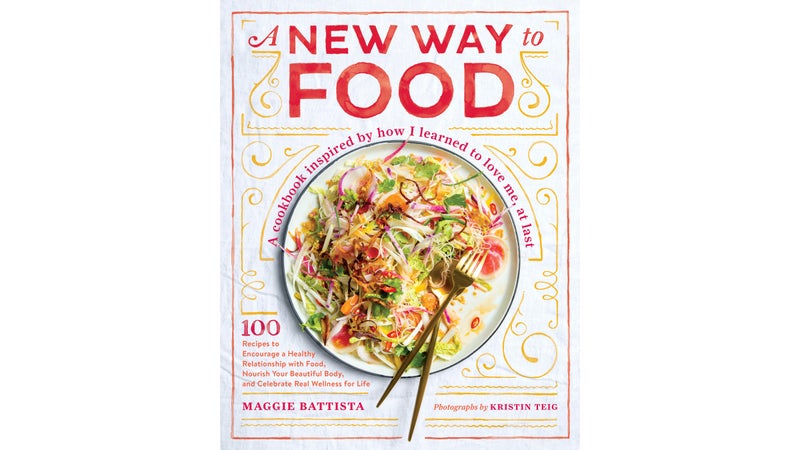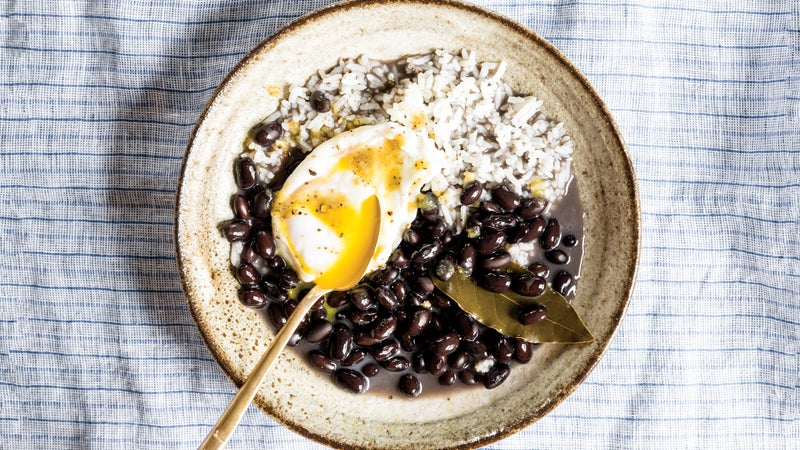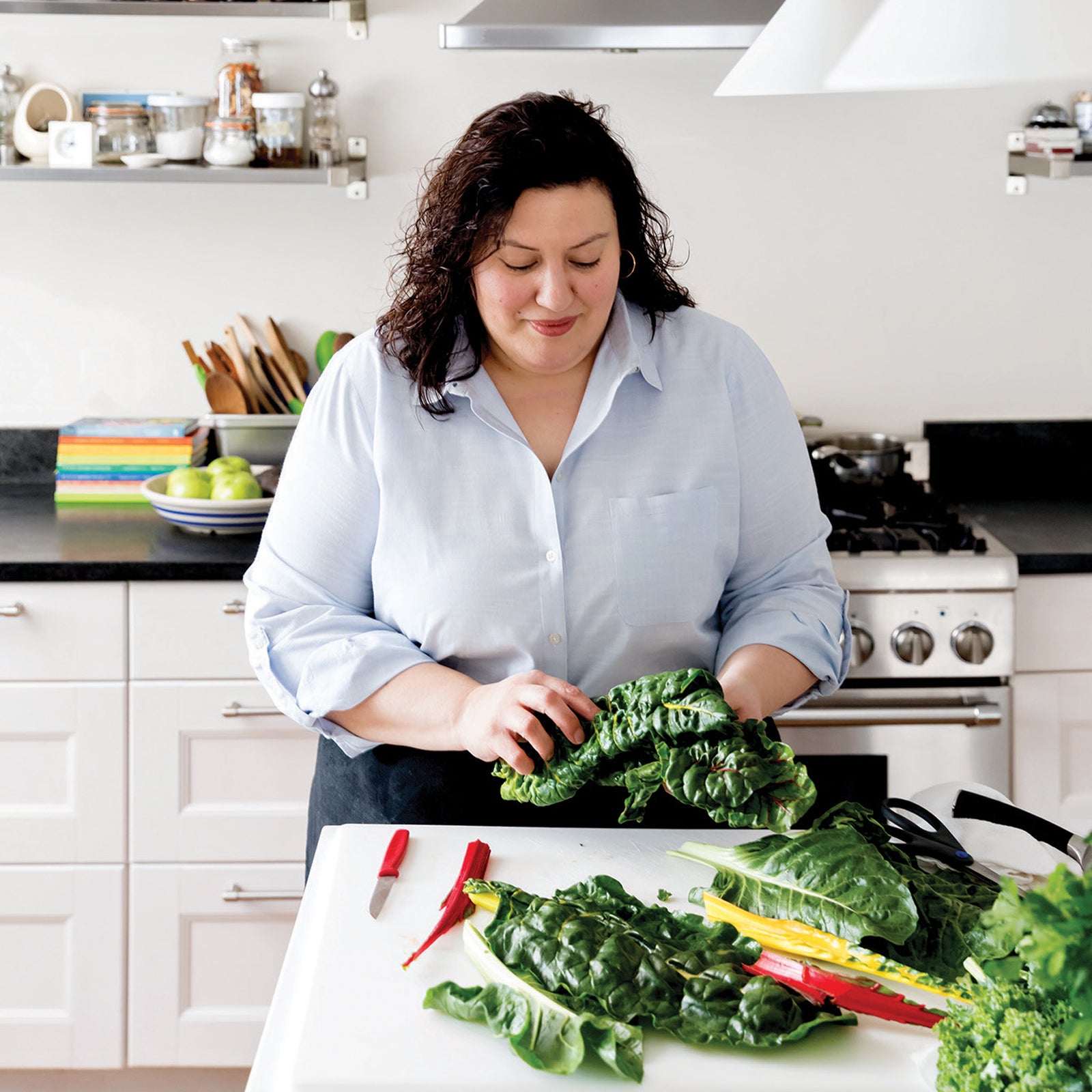Cookbook author Maggie Battista didn’t always have a healthy relationship with food. Growing up, she was teased about her weight and developed habits like binge eating during stressful or emotional periods. After a lifetime of shameful feelings and physical pain related to her diet, she decided it was finally time for a change. “I had a lot of reckoning to do,” says the Boston-based food maven behind the . In her recently published book, ($29.95, Roost Books), Battista confronts her harmful history with food and shares what she learned on her own journey.
Removing obstacles, especially the little ones, has been critical during Battista’s quest for better health. For example, she usually sits down on Sundays to plan out dinners for most of the week—maybe a or —and sometimes breakfast, too (often oats or hard-boiled eggs). The process mitigates decision fatigue throughout the workweek and doubles as a compassionate approach to wellness. “Sometimes I don’t make the best choices in the moment,” Battista says. “Meal planning is one tool you can use to be kind to yourself.”

The idea of meal planning can seem time consuming, but Battista says it’s important to make the distinction between planning for meals and actually making them all ahead of time. “Instagram can be scary,” Battista says, referring to the daunting images of color-coded, perfectly portioned Tupperware containers that abound on social media. (“If you can do that, I think that’s wonderful,” she says.) But simply setting aside some time each weekend to figure out what you’re going to make will help you meet your dietary goals. “Taking a few minutes to come up with a list on the weekend enables you to eat consistently with your values during the week.”
If you’re hoping to incorporate meal planning into your routine, read on for Battista’s advice—and a recipe for delicious make-ahead black beans.
Scan the Pantry
Before grocery shopping for fresh ingredients, Battista recommends surveying your cupboards for soon-to-expire items that should be used up. In addition to avoiding food waste, this can help you zero in on a meal plan for the week if you feel overwhelmed by choices. That said, the process should also be fun. “Choose what you want to eat,” she says, “what brings you joy.”
Focus on Fresh Stuff
“I make vegetables the star of my plate,” Battista says. “I feel good and satisfied when I do that.” To prolong the shelf life of fresh produce like lettuce, she wraps it in paper towels, which absorb excess moisture, and then bags it or stores it in glass containers with lids.
Prep Produce
To make it easier to incorporate lots of fruit and vegetables into her diet, Battista takes care of the drudgery up front. “I always wash my produce in bulk the moment it comes in the door.” Fill up the sink, wash it all, then lay it out on kitchen towels to dry while you do something else.
Make It at Home
Battista preps items like homemade salad dressing ahead of time. “I try to eat the highest-quality ingredients in the purest form,” Battista says. “They’re fresher and tastier that way.” Between dressing and ready-to-go veggies, it’s easy to throw together a fresh salad. Battista calls this a “future favor” to yourself.
Bulk Up
On weekends, making one big batch of a bulk item, like grains or beans, is the sweet spot between getting ahead of the game and spending your entire Sunday slaving over the stove. Battista loves making beans from scratch, a fortifying and economical tradition passed down from her Honduran mother. She’ll often eat a bowl with broth and olive oil as soon as they’re done—“There’s something about that first moment that tastes extra delicious”—then uses the rest throughout the week in dishes like her and .
Black Beans

“Canned beans do not compare to a big pot of cooked beans that were dried at the perfect time to maintain their flavor sans preservatives,” Battista writes. “Though I make black beans most frequently, this recipe applies to all types of dried shell beans—chickpeas, pink beans, and even white beans.” Makes about eight cups.
Ingredients
- 1 pound (454 grams) dried black beans
- 1 bay leaf
- 5 medium garlic cloves, peeled
- 6 cups (1.4 liters) vegetable stock or water (or a combination)
- 2 teaspoons sea salt
- 2 tablespoons roughly chopped fresh soft herbs (like cilantro leaves)
Directions
How to Use in a Meal
- Reheat some beans (without liquid) and spoon them into tortillas for quick tacos. Top with avocado, greens, or salsa.
- Reheat some beans (with their liquid) and a few red pepper flakes to make soup. Top with extra-virgin olive oil, yogurt, and fresh chopped herbs.
- Reheat some beans (with their liquid) and pile them on rice. Top with sliced avocado and greens dressed with lemon and oil.
From by Maggie Battista © 2019 by Maggie Battista. Photographs by Kristin Teig. Reprinted in arrangement with , an imprint of Shambhala Publications, Inc.


